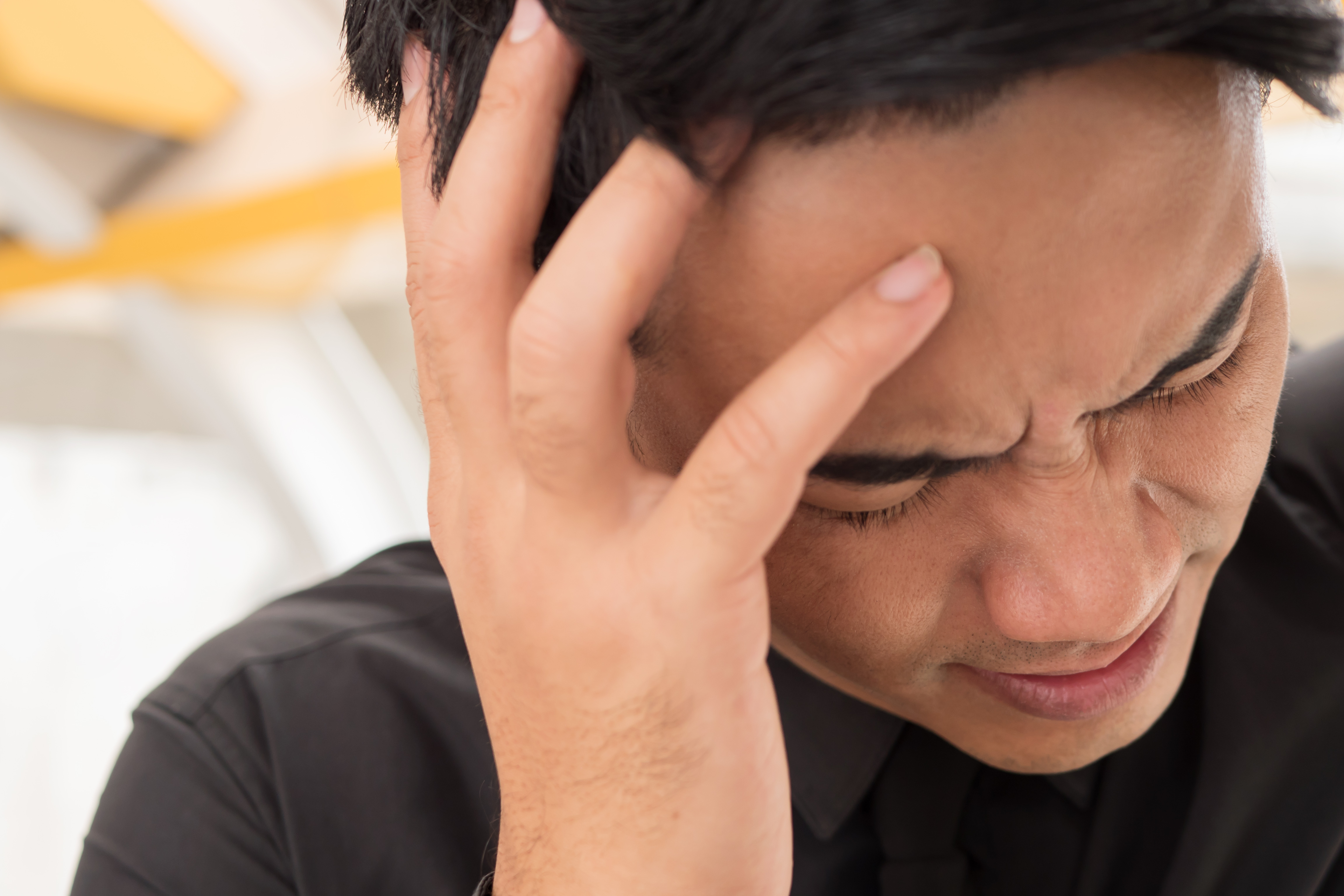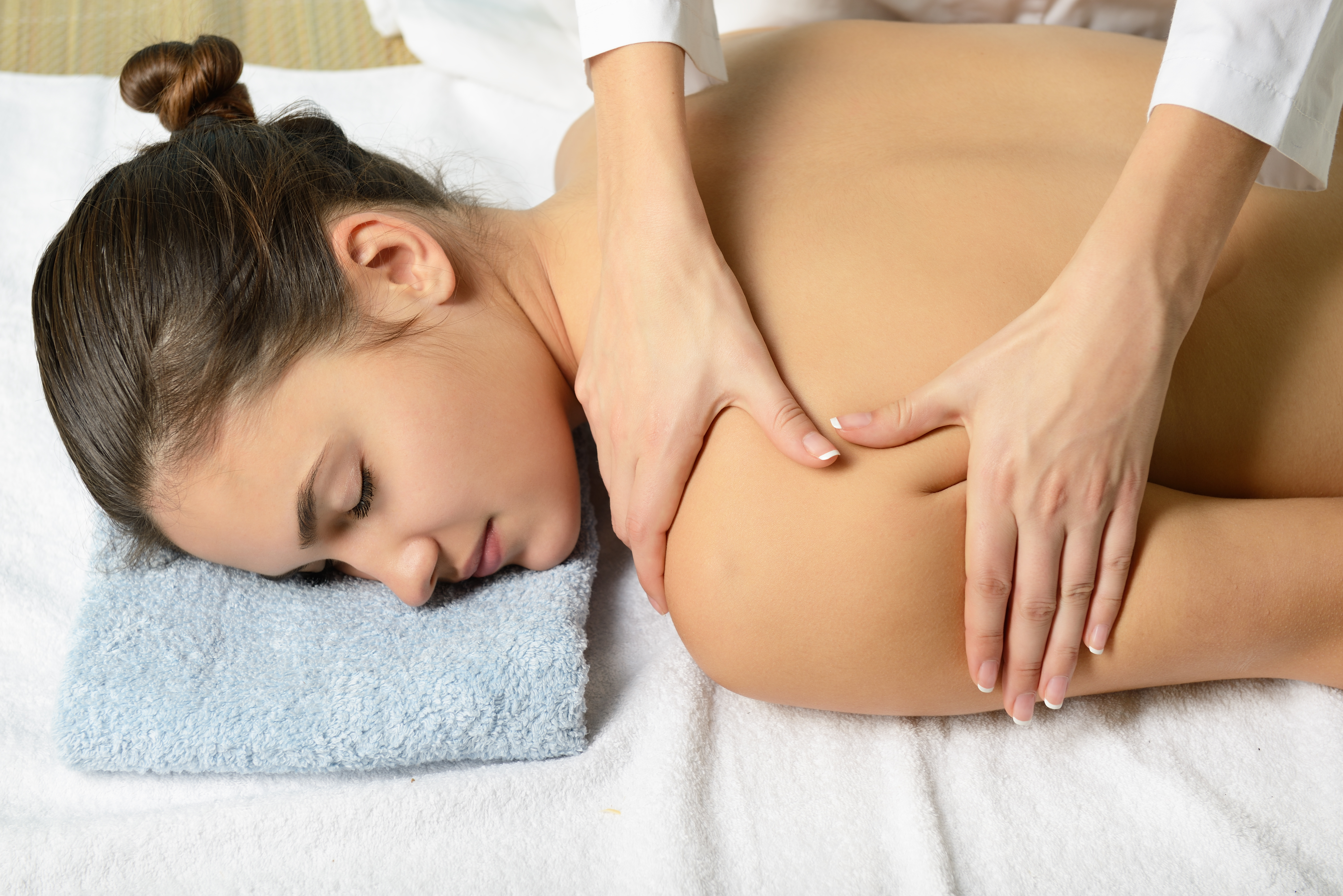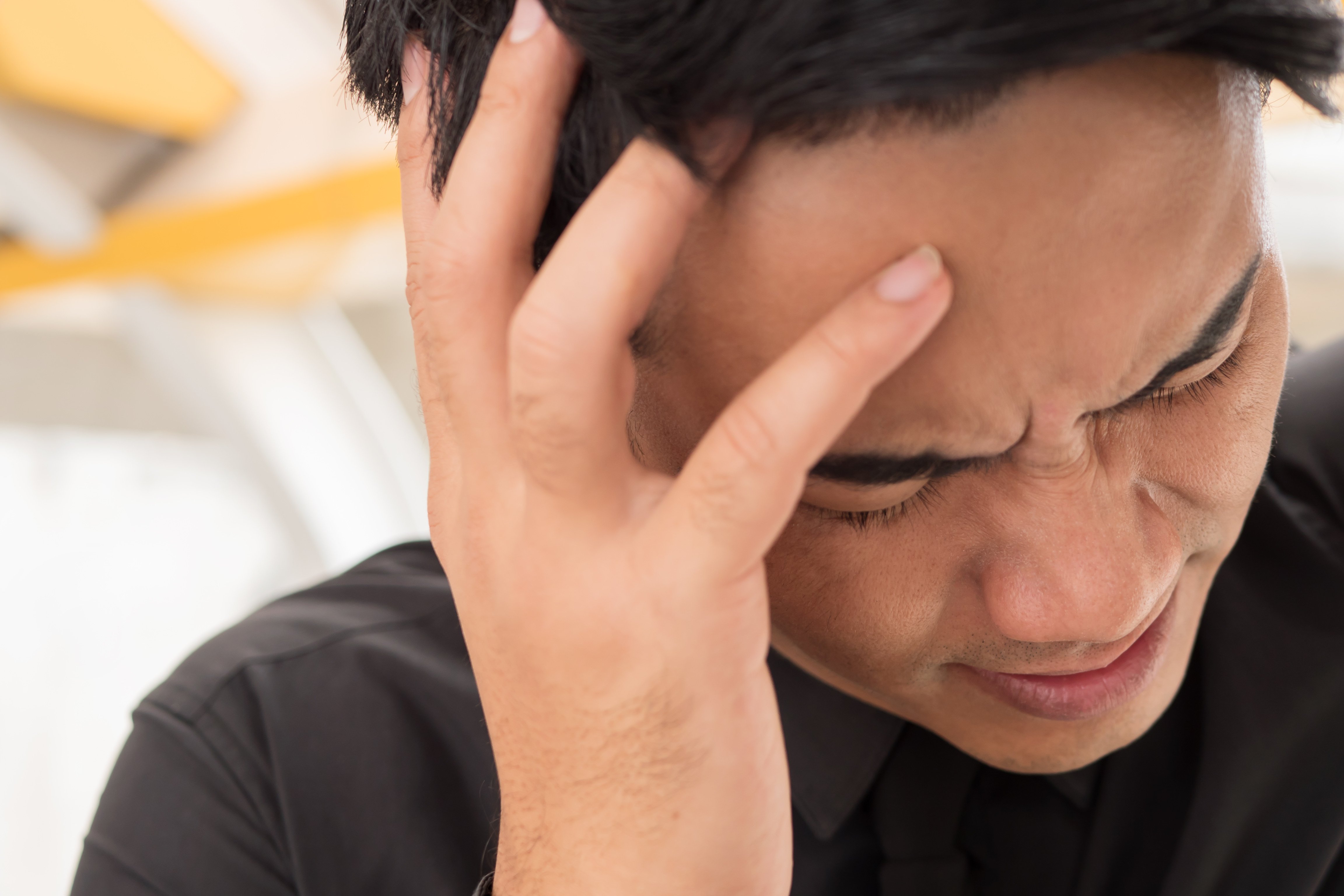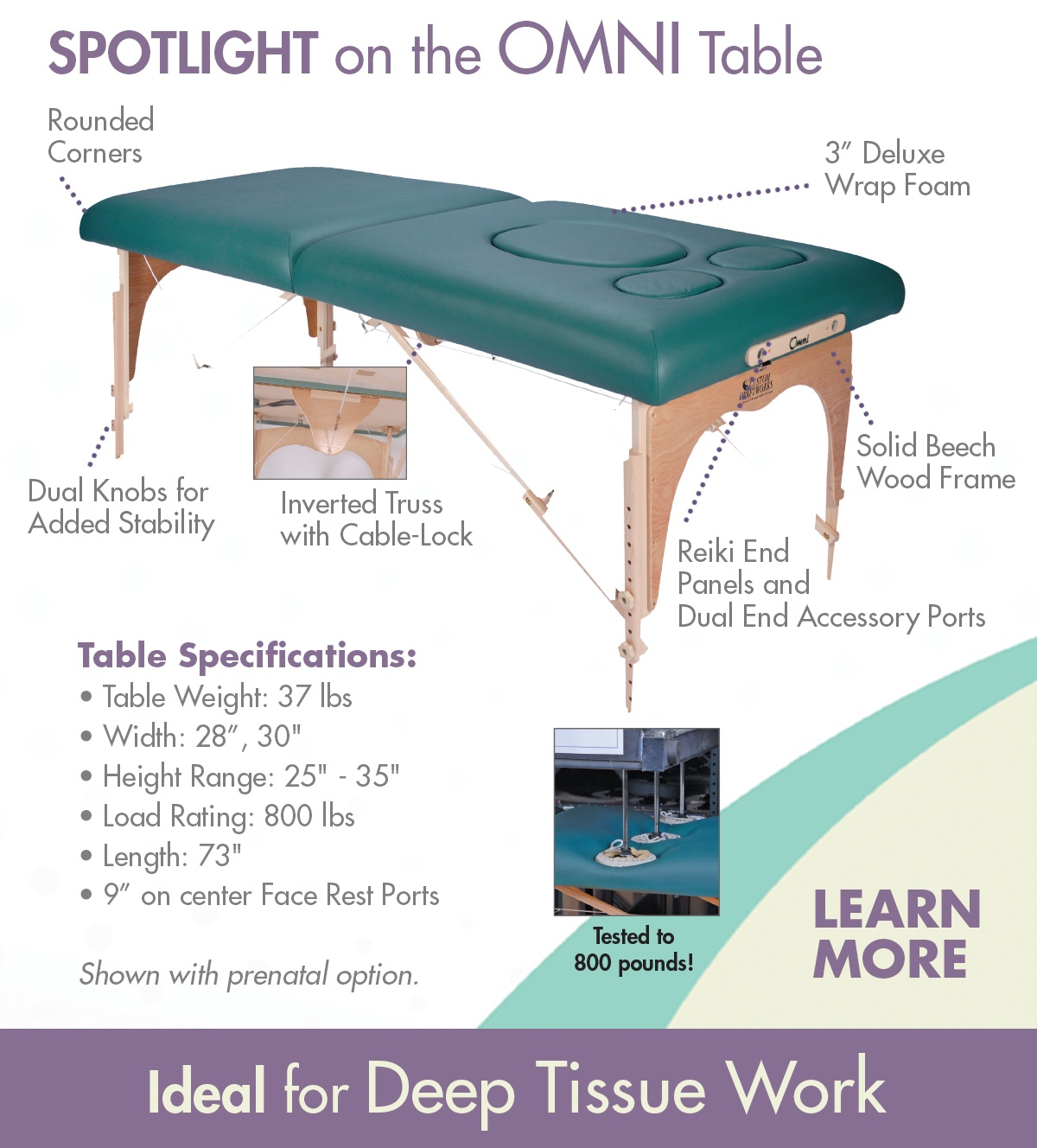
| via Shutterstock |
Understand Your Clients by Knowing the Common Headache Types
Tension-type Headaches.Tension-type headaches are very common, are typically mild and can be treated using over-the-counter medications. Average duration is somewhere between 30 minutes and an hour, and pain typically occurs on both sides of the head. Tension-type headaches can be triggered by a variety of factors including muscle tension, bone misalignment, eye strain and other musculoskeletal imbalances.
Vascular Headaches. Vascular headaches are usually characterized by a “pounding” feeling. Pain with vascular headaches is usually more severe than with the tension-type and longer lasting—anywhere from three to four hours to three days. While the exact cause of these headaches is unknown, changes such as swelling or constricting of the nerves or blood vessels can sometimes be an onset. Four common subcategories of vascular headaches include:
- Classic migraine. Also known as the “migraine with aura,” this type of vascular headache accounts for approximately one quarter of all migraines and involves pain that is preceded by blurred vision, a perception of flashing lights or auras. Auditory hallucinations might also occur, along with feelings of numbness, speech difficulty or muscle weakness. While the exact cause is currently unknown, a migraine with aura can be triggered by many of the same factors as migraines in general: stress, bright lights, some foods and medications, and too much or too little sleep.
- Aura-less common migraine. Migraines without aura can present as throbbing pain on one side of the head, and light sensitivity, nausea and/or vomiting may accompany head pain. Unlike migraines with auras, pre-symptoms are nonexistent. Pain could last anywhere from several hours to several days.
- Cluster headache. Cluster headaches affect more men than women and are both less common and not as well understood as migraines. Cluster headaches are more likely to occur during nighttime, and usually start with little or no warning. A cluster period can last anywhere from six to 12 weeks, and these headaches sometimes occur seasonally, such as every spring or fall. Symptoms include excruciating pain that generally starts in or around one eye but may radiate to the head, neck and shoulders. During a cluster period, headaches usually occur every day, sometimes several times a day, with a single attack lasting from 15 minutes to three hours. Notably, headaches usually occur at the same time each day, and pain usually ends as suddenly as it began.
- Sinus headache. Sinuses are air-filled spaces in your forehead, cheekbones and nose area. If inflamed—either by an allergic reaction or an infection—sinus swelling could prevent mucus from draining properly. These headaches are believed to be caused by too much fluid in the sinus area of the skull resulting in pressure build-up, which leads to headache pain. Symptoms include pain in the cheekbones, forehead or nose. At the same time, you might also have sinus symptoms, such as a runny nose, ringing in the ears, fever or face swelling.
Traction-inflammatory Headaches. While rare, this kind of headache could be a sign of either a bacterial or viral issue. Symptoms could include slurred speech, numbness in the body and difficulties in motor control. Possible causes for this type of headache include meningitis, stroke or a tumor.
 |
| via Shutterstock |
Common Massage Techniques Help Alleviate Headache Pain
Dr. Ben Benjamin, Ph.D., founder of the Muscular Therapy Institute in Cambridge, Massachusetts, stresses that for massage to be effective, massage therapists need to understand the cause of the client’s headache. “If [the client] has an injury that’s causing the headache, such as a neck injury, it is important to address both the migraine and the neck injury with massage to relieve headache pain,” he explains.
Alison Babil, a massage therapist from Maryland, agrees, adding that the techniques she uses often vary depending on the client, so understanding your clients—especially when they’re in pain—is imperative.
These massage techniques show real promise when working with clients suffering from headache pain:
Deep Tissue Massage. Because you are using firm pressure accompanied with slow strokes to massage deeper muscle layers, deep-tissue massage can relax strained muscles that may be the root cause of headache pain. Here, think deep, gliding motions using the knuckles or thumbs. According to Babil, this kind of massage works the facial muscles in a focused way and the compression that comes with the firm pressure helps with pain that is primarily affecting specific areas of the head. Research also suggests that applying deep-tissue massage to the head alleviates head pain. In a recent study on the efficacy of manual therapy in patients with tension-type headaches, applying a deep and progressive gliding movement to the head using the fingertips released suboccipital muscle spasms, which can contribute to headache pain.
Trigger Point Massage. Like deep-tissue massage, trigger point relaxes strained muscles by using direct pressure. wherever the primary block is,” Dr. Benjamin says. “Sometimes, the migraine could occur in the upper region of the head, such as around the eyes or at the temple, so I find applying pressure for a very brief second throughout the treatment to the head and neck region to be very beneficial.”
According to Susan Juczak, a massage therapist in North Carolina, neuromuscular massage, which pinpoints and releases stiff muscles or trigger points, can also help massage therapists get right to the source of headache pain, though she’s quick to caution that using the right amount of pressure is important. “It’s also important to make sure to work on one side of the head at a time so that each muscle is treated,” she adds.

Custom Craftworks
Originally founded in 1986, Custom Craftworks supports the vital work of professional manual therapists and educators in the massage therapy and holistic health fields by designing, building and sourcing the best-quality massage tables, chairs, equipment and accessories available. In 2009, the company was acquired by Pivotal Health Solutions based in Watertown, South Dakota.



